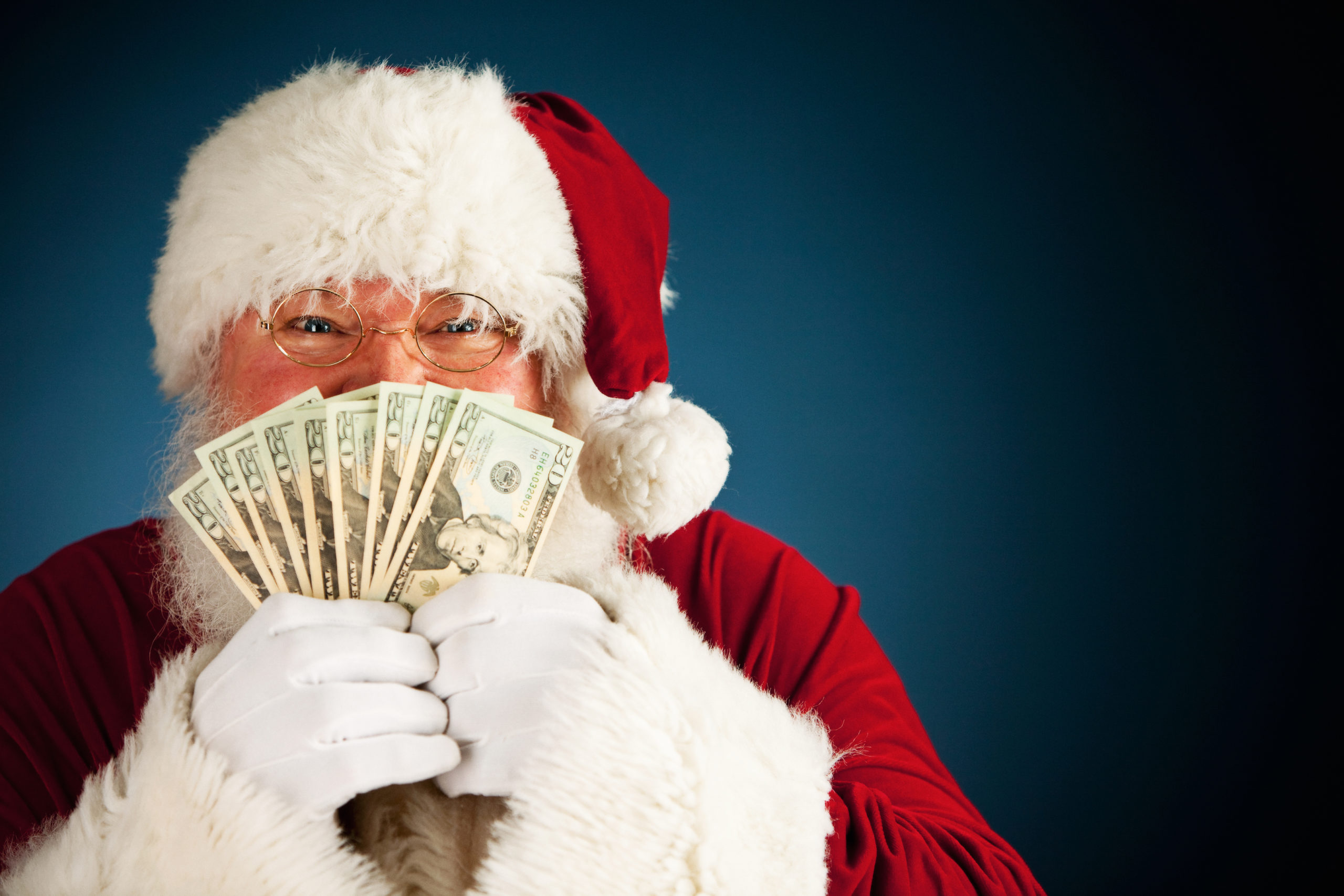Before the Congress declared in 1861 that it alone had the right to issue paper currency, individual banks designed and printed bank notes with images that they selected. One of those images was Santa.
Issued by the Knickerbocker Bank, this 19th century bank note had a skinny Santa that resembled the Saint Nicholas described by the first Dutch settlers:

There actually was a Saint Nicholas Bank in NYC. Naturally, its bank notes had Santa images (with a more American girth):

Because it had sentimental value, Santa money appealed to banks hoping that people would store the notes with other Christmas memories. After all, the fewer bank notes that were redeemed, the more gold the bank could happily retain in its vaults.
Where are we going? To the commercial side of Christmas.
Holiday Spending
Starting with Alabama and continuing in the North during the mid-19th century, one-by-one, individual states declared Christmas an official holiday. As the day’s popularity grew, so too did Christmas commerce.
First we got the Christmas tree. An Americanized German custom, the Christmas tree soon became a salable commodity displayed in town squares. After the tree, as decorative nuts and popcorn became inadequate, we needed store-bought ornaments. And once we had ornaments, we needed presents and cards. In 1856, Harper’s Magazine told us, “Love is the moral of Christmas…What are gifts but the proof and signs of love?” Meanwhile, traveling from Europe with immigrants who developed color printing, the idea of a cheery Christmas card with Santa and his reindeer surrounded by presents became increasingly popular…and so did wrapping paper. (Yes–a huge oversimplification but based on the facts.)
Our Bottom Line: The Consumer
After a transportation, financial and capital goods foundation for the U.S. economy was built during the 19th century, the consumer was ready to act as an economic pacesetter. Starting with the 1920s, consumption expenditures increasingly became the fuel that drove the economy the fastest from Thanksgiving to the New Year.
Below in a Gallup survey, you can see that December spending is consistently higher than August and September, except for 2008 when the Great Recession began.

While we have always seen a switch in what we buy, now where is changing as we move from the mall to online spending.







Very interesting summary of commercialization of Christmas. Also read interesting WSJ article on reduction in brick and mortar Xmas spending, and role of Amazon in that.